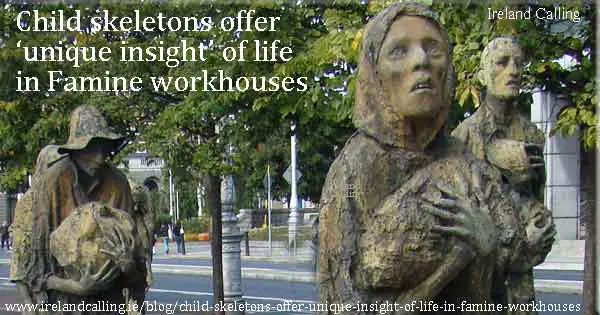In 2014, historians in Ireland discovered more about the horrifying reality for mothers and children during the ‘Great Famine’.
They believe many mothers gave their babies food they should have eaten themselves, thereby hastening their own death.

More than 500 child skeletons have been the subject of a study by archaeologists from University College Cork. They were found at the grounds of a Kilkenny workhouse, which would have been the refuge for thousands of desperate mothers and their children.
The site was the burial ground for nearly a thousand Famine victims, with more than half being children.
Studies reveal real stories of the victims
Studies of the skeletons have revealed details of the real stories of these victims. One of the leaders of the study, Dr Jonny Geber, said: “It would have been a severely traumatic experience to have entered the workhouse. Especially for the children, as they would have lost their parents through segregation, if they weren’t already orphans. Young children need a lot of emotional security and comfort for their wellbeing and I’d say they lost a lot of that when they went into the workhouse.”
The study has revealed that malnutrition and illness were preventing children growing properly. Mothers were often too weak to produce breast milk for their babies. In some cases, they fed their own rations to their children in desperation, though this would only see their own health deteriorate further.
Dr Geber and his team have been able to gather evidence that paints a realistic picture of the suffering. He said: “The most striking thing was the scurvy rate which was so high. Scurvy leaves very subtle marks on the skeleton. It’s a very painful disease as it affects your muscles, and you also get bleeding gums which we could see along the teeth where you got porotic lesions, and it may have been painful to eat for these children.
“With this research I can tell the story of those who did not survive the Famine, which is a story that has never been told. Through interpreting their skeletons you can get a unique insight.”
Victims had to work for their food
Hundreds of workhouses were set up across Ireland during the Famine. Sufferers were given food and shelter, in return for a day’s labour. The government were desperate not to give aid for free, through fear of creating a dependency culture. Victims had to work for their food, often carrying out pointless tasks such as breaking rocks all day, as the government didn’t want these workhouses to interfere with the natural economy.
The reality of life in these workhouses was unimaginable. Infants were taken from their mothers as soon as they passed the age of two. Diseases were rife and many children were too weak to survive, with the stress of being separated from their mothers sealing their fate.
More Irish famine articles
Deserted Village of Achill – victim of the Irish Famine Holocaust
Cork statue pays tribute to Choctaw tribe’s generosity during Irish Famine

